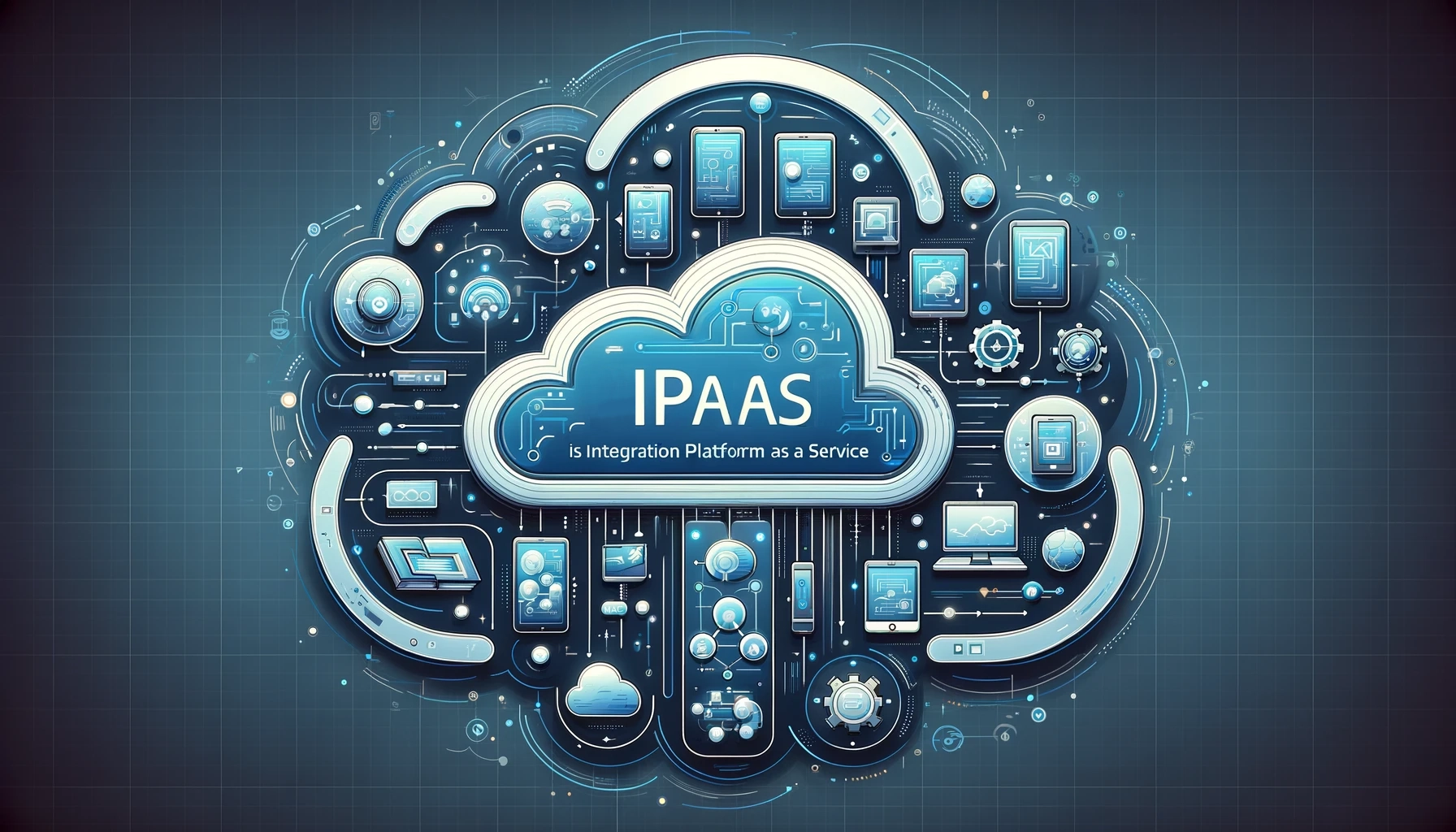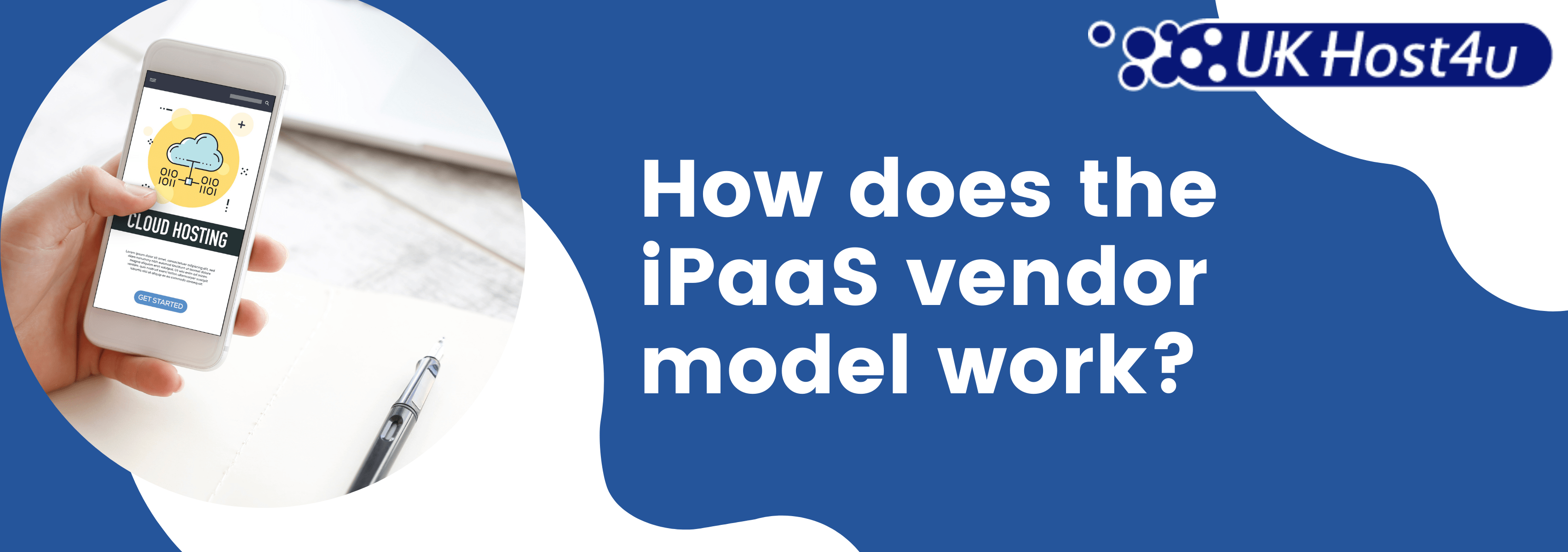Guide to Integration Platform as a Service: What is iPaaS?

Cloud computing has changed the way we access and organise information. For large companies that are operating complex systems with multiple software packages across multiple environments, there is a need for unity and integration. This is where integration platform as a service (iPaaS) services comes into play.
iPaaS is a set of automated tools that make it possible for multiple software applications to be managed and deployed across large organisations. This can be across a single site or distributed throughout the world.
As more organisations switch to a hybrid working model and allow their employees to work from home, this presents new challenges for ensuring that software and data are available anywhere at any time. To solve this problem, many organisations are exploring iPaaS solutions to improve connectivity, collaboration, security and efficiency.
In this guide, we will take a deep dive into the role of iPaaS within the cloud computing ecosystem to give you a thorough understanding of how this cloud solution could help to transform your operations. This information will be valuable for IT managers tasked with upgrading their systems, and key stakeholders who need to understand precisely what they are investing in.
What are the main types of cloud platforms?

Cloud computing is one of the most talked-about technologies today. A cloud platform can be used to store data, manage infrastructure, and execute various tasks.
Before cloud computing, every organisation would have to own the infrastructure required to host and deploy its systems. This would mean vast, power-hungry data centres that would cost a lot to purchase, update and maintain. Servers would also require the physical space and infrastructure to connect to devices within the building.
Cloud computing removes the need for companies to own the infrastructure, freeing up space and resources within the business. This offers significant savings in terms of initial investment, space and staffing requirements. IT departments can instead focus on optimisation rather than worrying about simple maintenance tasks. By switching to cloud computing, companies have more flexibility than ever before.
The 3 main categories of cloud platforms are Software as a Service (SaaS), Platform as a Service (PaaS), and Infrastructure as a Service (IaaS). Within each category, there are more specific services, including integration platform as a service. This is a specific type of platform that serves one purpose.
When we talk about cloud computing services, there is a distinct hierarchy of provisions. At the bottom of the pyramid, we have infrastructure as a service. This allows companies to hire the space needed to deploy and access platforms and software. Above this, you’ll find platform as a service (and the more niche types of offering such as integration platform as a service). Vendors offering a platform as a service model may well use an IaaS provider to host and deploy their platform, or they might own the infrastructure. At the top of the pyramid, we have software as a service, which is often built using a PaaS which is hosted using an IaaS.
This interconnected ecosystem of vendors and providers makes it possible for small companies to behave like much larger organisations. One of the most famous IaaS providers is Amazon Web Services. This was initially launched as a way to share access to the very same network that Amazon.com is built on. This means that small retailers can take advantage of the same resources and provisions offered by Amazon, but for a fraction of the cost.
There are many advantages to switching to a cloud computing model, including lower costs, scalability, flexibility and increased security. Cloud computing helps to simplify many processes and remove the need to invest in costly infrastructure. In the case of integration platform as a service, it also helps to ensure that large organisations can function effectively.
What is an Integration Platform as a Service?

Integration Platform as a Service is a specific type of service that enables the integration of data from one or more sources to the desired destination. In the context of a large organisation, this platform would allow them to host and deploy applications and software on multiple platforms from anywhere in the world.
This type of platform would typically offer automated tools including pre-built connectors, rules, maps and transformations that make it possible for enterprise software to be managed and deployed with ease.
Some will also offer support for legacy applications which would allow companies to continually update their software provisions without losing compatibility. It might also offer options to include mobile support, social platforms and business data management to ensure IT managers and key stakeholders have clear access to everything they need.
The platform offers several advantages that are essential for any business, such as:
- Flexibility: Data can be easily integrated with other applications and platforms.
- Security: The platform uses Transport Layer Security (TLS) to secure data in transit.
- Scalability: Data can be processed quickly and seamlessly by scaling up or down on demand.
- Integration with SaaS products: Integration Platforms provide an easy way to integrate with other Software as a Service products.
While it would be possible for IT departments to manage this integration internally, it would be complex and time-consuming to build this infrastructure from scratch. Companies can still exert control over their cloud computing environments, even when outsourcing these essential tasks. Choosing a cloud vendor that offers flexibility over your cloud environment could allow you to enjoy the best of both worlds.
How does it work?

An integration platform as a service is a software that allows companies to integrate all of their data sources into one application. It saves time and money by integrating the existing data sources with the new ones in order for them both to work together seamlessly.
An iPaaS vendor will provide the hosting for application servers and other essential infrastructure. They will also offer integration tooling and the middleware developers need to be able to build, test and deploy bespoke software for their organisation. All of this will be hosted on cloud servers, making it possible to access the information from anywhere in the world with an internet connection.
Integration flows can be built far more quickly when using pre-built connectors and business rules. Rather than starting from scratch, organisations can take advantage of pre-existing modules that can be easily adapted to their needs. This helps to reduce setup times and ensures a seamless transition with minimal disruption to business operations.
It’s helpful to think about iPaaS vendors as the contractor on a building site. The owner is responsible for choosing the style, features and finish, and the contractor is responsible for making sure that everything fits together and is within the scope of what can be achieved with the existing budget.
What are the key features of iPaaS?

iPaaS is a platform as a service (PaaS), which offers resources such as data storage, server resources, and security for software applications.
iPaaS can be used to enhance the software development process by providing APIs designed to make it easy to integrate with other systems and data sources. With iPaaS developers can focus on customising the application and not on building the infrastructure that is needed to run it. There are a few key features offered by iPaaS vendors.
- Simple to use platform that allows organisations to deploy, integrate and manage apps and software across multiple devices.
- Comprehensive integration tools that fit together using pre-built connectors and modules.
- Capable of supporting a range of protocols, including HTTP, FTP, Advanced Messaging Queuing Protocol and Open Data Protocol.
- Capable of accessing, processing, cleaning and transforming a range of data formats, including XML and JSON.
- High-performance capabilities when handling large amounts of data and concurrent use.
- Flexible enough to facilitate the use of custom connectors when required, making it easy for IT departments to modify access mechanisms.
- Security mechanism to ensure access is limited to those with the correct credentials. Security provisions can be incredibly complex across large organisations, so a single point of management provides added peace of mind.
- Capable of providing real-time processing alongside batch data integration.
- Performance monitoring for things like failures, workflow performance, resource utilisation and latency.
How does the iPaaS vendor model work?

iPaaS vendors offer a range of functionality that goes beyond simply automating business processes or integrating applications. For example, they might provide a dashboard to monitor customer satisfaction and provide analytics for identifying trends.
Some iPaaS vendors offer an on-premise model, where the software is installed within the company’s own data centre or cloud environment. Others offer a hosted model, where the software resides in the iPaaS vendor’s data centre or cloud environment and is accessed over the internet via an application programming interface (API). Some iPaaS vendors also offer a hybrid model which offers the best of both worlds.
iPaaS vendors provide access and full management of IaaS and PaaS services, ensuring that organisations have a single point of contact and all licences are managed in one place. This also simplifies the billing process, ensuring that large companies can make data-driven decisions on their IT spending.
Many companies making the most of iPaaS cloud computing services will use the platform to design and deploy their own software and applications. These might be used internally, or offered on a SaaS vendor format.
What are the benefits of an Integration Platform as a Service?

Integration Platform as a Service is a popular trend among the industries. The platform enables people to integrate and manage data from different sources, whether it is a database, a web service or a flat-file.
This integration platform as a service simplifies the process of data integration and enhances its security. It removes the need for manual intervention and has enabled companies to run their operations more smoothly.
iPaaS enables companies to respond to the growing demand for new software and applications, the use of legacy software, and being able to move seamlessly between these environments. It makes companies more competitive by allowing them to focus on the optimisation of resources rather than the provision of resources. These are just some of the numerous benefits of using iPaaS:
- Cloud computing and iPaaS enables IT departments to focus on implementing the tools needed to grow the business or organisation, rather than being too focused on the infrastructure needed to implement these changes.
- There is also the benefit of being able to increase security across the organisation by creating a centralised system that manages everything from employee access to firewalls. Using threat monitoring offered by the iPaaS provider can also help to bolster security provisions. Many vendors will also offer disaster recovery and business continuity planning to ensure your business is not impacted by any threats.
- This cloud computing service offers a cost-effective alternative to managing and maintaining your own infrastructure. Using a cloud network enables organisations to only pay for the resources they need, scaling up as required.
- Scalability is also a key benefit to cloud computing. As a company expands, the iPaaS setup can easily expand to include new software and applications while still offering support for legacy packages. This allows small companies to operate like much larger companies, making the most of cloud provisions that would normally require extensive investment if the company had to purchase the infrastructure.
- When choosing an iPaaS model, all licences for platforms and software can be managed in one place. This reduces the need for admins to keep on top of access and credentials.
- Using pre-built connectors avoids the need for extensive investment in order to bring all software and applications into the same ecosystem. Building a network of this scale from scratch would require considerable investment in terms of IT professionals and hardware.
What are the disadvantages of iPaas?

While this system can solve a lot of problems for large organisations and frequently stretched IT departments, this setup has its limitations and might not be right for every company or organisation. Before choosing to switch to an iPaaS setup, it’s important to consider the limitations that this could place on your business or operations. These are some of the most common problems organisations find when exploring iPaaS as a potential solution:
- With so many iPaaS vendors available, and each one offering a unique take on the service, it can be difficult for companies to know which is right for their needs. Some iPaaS setups work better in specific circumstances than in others, but you might not understand the limitations until it is too late. Once established, switching can be complex, so many companies will simply choose to live with the limitations and adapt.
- While the iPaaS vendor is ultimately responsible for maintenance, security and upkeep, it is still vital for organisations to dedicate resources to these tasks, even if it is only in a supervisory context. While resources will be deployed in a different way, they cannot be eliminated entirely. Assuming that iPaaS is a replacement for your IT department would be a risky move.
- Companies may struggle to identify what they need right now and what they might need further down the road. This can lead to shortsighted choices that ultimately limit the company’s growth. To avoid this, key decision-makers need to understand the benefits and limitations of each iPaaS package to ensure they choose the right one for their current and future requirements.
How to choose the right iPaaS for your organisation

There are many different types of iPaaS available that can be adapted to your company needs. These are generally classified as private, cloud and hybrid hosting. Understanding the opportunities and limitations offered by each system is the first step in choosing the right vendor for your needs.
It’s important to choose the right type for your organisation because they all serve different purposes and have different benefits. It pays to take the time to explore each vendor in detail so that everyone in the organisation has an understanding of how this will change the way they build, deploy and access applications and software.
When looking for an iPaaS vendor, it makes sense to consider the following factors.
Scalability
The primary benefit of cloud computing is the opportunity to take a flexible and scalable approach to your infrastructure. This means that your iPaaS setup should meet your current needs while also having the option to seamlessly expand without requiring migrations or new infrastructure.
Flexible pricing
A key reason for choosing cloud computing setups over a traditional hosting setup is the option to make the most of pay-as-you-go pricing. This means that you only pay for the resources you need, but more are available at any time should you need them. This could mean a seamless increase in bandwidth or performance. Some vendors will offer pricing bands while others will allow you to only pay for the resources you use.
Support
When switching to an iPaaS model, you should be able to scale back or redeploy your IT department to other tasks. This can only happen if you have quality support from the vendor. When trusting an iPaaS provider with your company software and application provisions, an outage could be disastrous for your business. So if the worst should happen, you need to know that they will have a team of professionals working to eliminate the risk of an outage, and act quickly should the worst happen.
New technology
Another key benefit of choosing an iPaaS vendor is that you can make the most of their industry expertise. They should invest heavily in the newest technology to ensure your application environment is always performing as well as it can. By outsourcing the task of identifying and deploying new technology, companies can also protect themselves from the high cost of speculative investment.
Security and disaster recovery
Protecting your business interests through robust security protocols is good business sense, but you might not be able to achieve this without a little bit of support from your iPaaS vendor.
A good vendor will be actively working to identify and eliminate threats while also being ready to act in the event the worst should happen. When iPaaS effectively enables you to run your entire business, you can’t afford a security breach or outage. Look for a vendor that appreciates the importance of this and acts in proportion to the potential threat.
Your iPaaS supplier should also have an adequate disaster recovery and business continuation plan in place to ensure minimal disruption to your business in the event of data loss or a security breach.
The right tools to build
Ultimately, iPaaS is also a platform as a service, so any business needs to know that their developers will have access to the tools and building environments they need to do their best work.
The alternative to iPaaS

If the iPaaS model isn’t right for your business needs, there are a few other options to consider. These are enterprise bus service (ESB) and API management. The lines between the three different services have become more blurred over the years, and there may be a significant crossover between these distinct services.
An enterprise bus service can typically handle most SaaS applications, but this system would be best suited to internal, on-premises applications. This is often the route forward for companies that need to run legacy software. This setup can be more cost-effective than an iPaaS, but it has more limitations.
API management offers a different approach to enterprise software concerns. This method allows for applications to be integrated, provided every application shares the same API. Some iPaaS vendors offer an API-focussed approach to their services, but it isn’t always suitable for every organisation.
Before making a decision about the right way forward for your enterprise software provisions, it’s important to gather input from key stakeholders and research the options available. Integration platform as a service can offer some distinct benefits, but it is important to consider the limitations of this setup and how else complete integration could be achieved.

